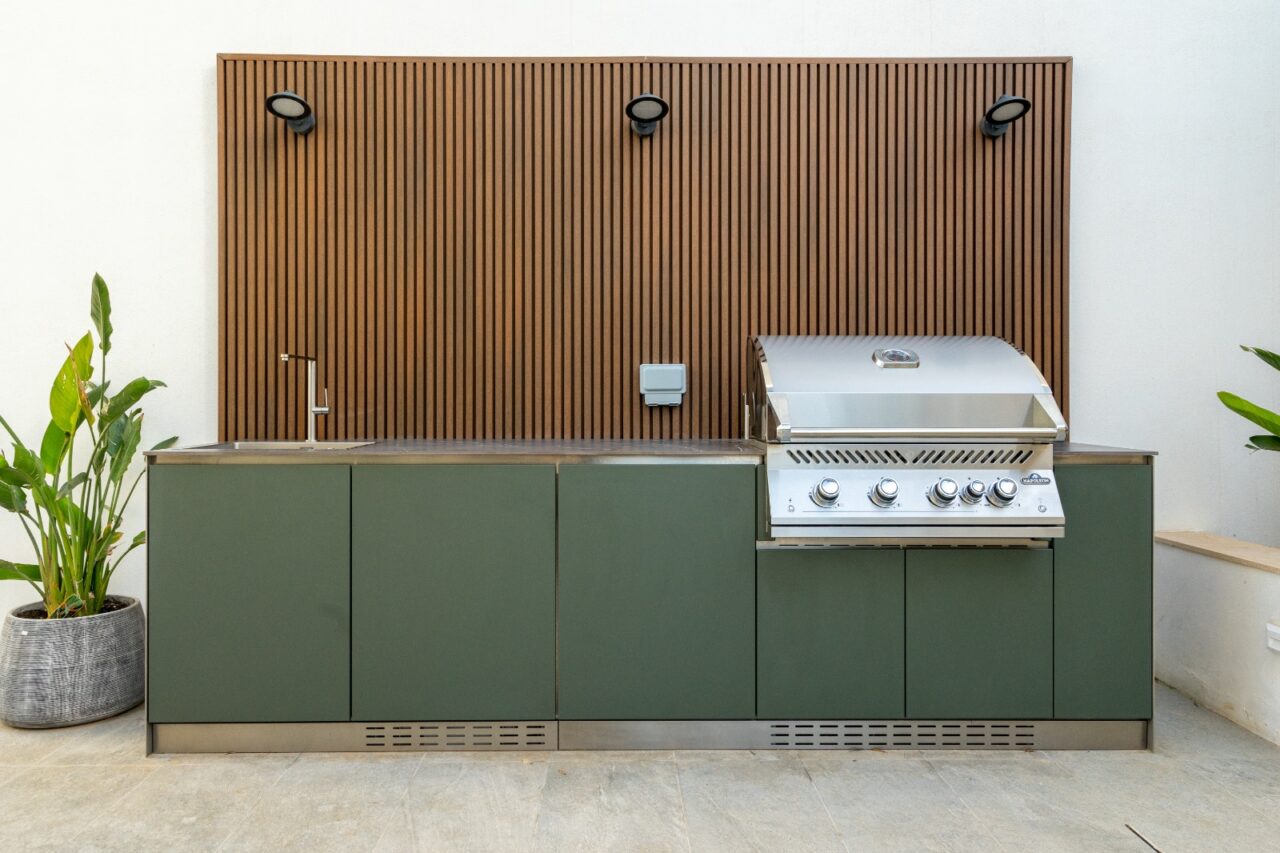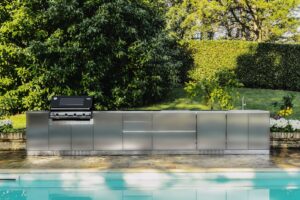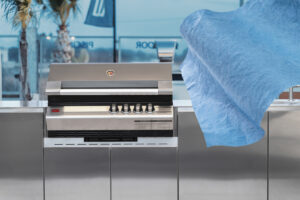A well-designed outdoor kitchen is not just a functional place for cooking, but also a welcoming and harmonious space that seamlessly integrates with its surroundings. For this reason, more and more designers and architects present clients with natural materials that align with their outdoor space, making it aesthetically pleasing, durable, weather-resistant, and, most importantly, sustainable. In this article, we will explore the main natural materials that can be used for designing an outdoor kitchen, analyzing their advantages and key characteristics.
Natural materials for outdoor kitchens: the most requested options
Choosing natural materials is the first step toward creating a functional and sustainable outdoor kitchen. In addition to stainless steel, which is naturally an eco-friendly and durable material, perfect for constructing the structure of an outdoor kitchen in full respect of the environment, there are numerous natural materials that can complete and sometimes even enhance its appearance. Let’s look at the main ones.
Wood
A versatile material with timeless beauty, wood is one of the most beloved materials not only indoors but also outdoors, where the choice must necessarily fall on species capable of withstanding the elements, such as:
- Teak wood: rich in natural oils, highly resistant to insects, fungi, moisture, and adverse weather conditions.
- Iroko wood: durable, resistant to moisture and pest attacks, not very sensitive to temperature fluctuations.
- Cedar wood: particularly resistant not only to weather conditions but also to decay.
To maintain their beauty and integrity over time, however, these types of wood require periodic treatments with oils and protective varnishes that preserve them without altering their appearance.
Natural stones
With their exceptional ability to remain unchanged over time, natural stones are increasingly becoming a common choice in the design of functional and sustainable outdoor kitchens. Among the most requested are:
- Granite: resistant to scratches, heat, and moisture, ideal for countertops.
- Slate: easily adapts to modern or rustic outdoor kitchens.
- Travertine: gives a sophisticated look to any outdoor space, often used for cladding and countertops.
Like wood, natural stones, despite being durable, require proper and regular maintenance.
Bricks
With excellent thermal capacity, bricks can be used to create supporting structures for barbecues or wood-fired ovens, as well as rustic cladding for walls or countertops. In this case, maintenance is minimal.
Bamboo
A lightweight, flexible, and durable material that grows very quickly in nature, bamboo is a sustainable choice ideal for creating partitions, pergola coverings, seating, or decorative details.
Conclusion
The use of natural materials for designing an outdoor kitchen not only ensures a durable and functional environment but also enhances harmony with the surrounding landscape. Choosing materials such as wood, natural stones, bricks, and bamboo means opting for a solution that combines aesthetics, sustainability, and long-term durability. Investing in an outdoor kitchen made with natural materials is, therefore, a way to create a welcoming space, ideal for sharing convivial moments outdoors while fully respecting the environment.






